Off-Roading Essential Gear
The backcountry can be an ever-changing and unforgiving place, especially if you’re unprepared for the harsh realities of off-roading in rugged terrain. When Overlanding, it’s critical to properly prepare for each trip ahead of time by putting together an off-roading essentials kit with the emergency must-haves needed for efficient on-the-trail repairs and recovery in the backcountry.
Here at onX Offroad, we enjoy and support all forms of off-roading—no matter if it’s of the two or four-wheel variety. So, we set out to help fellow off-road enthusiasts better prepare for their next adventure by putting together a suggested list of must-haves for off-roading, which includes trail tools, emergency and rescue items, navigation equipment, and other essential off-road necessities.
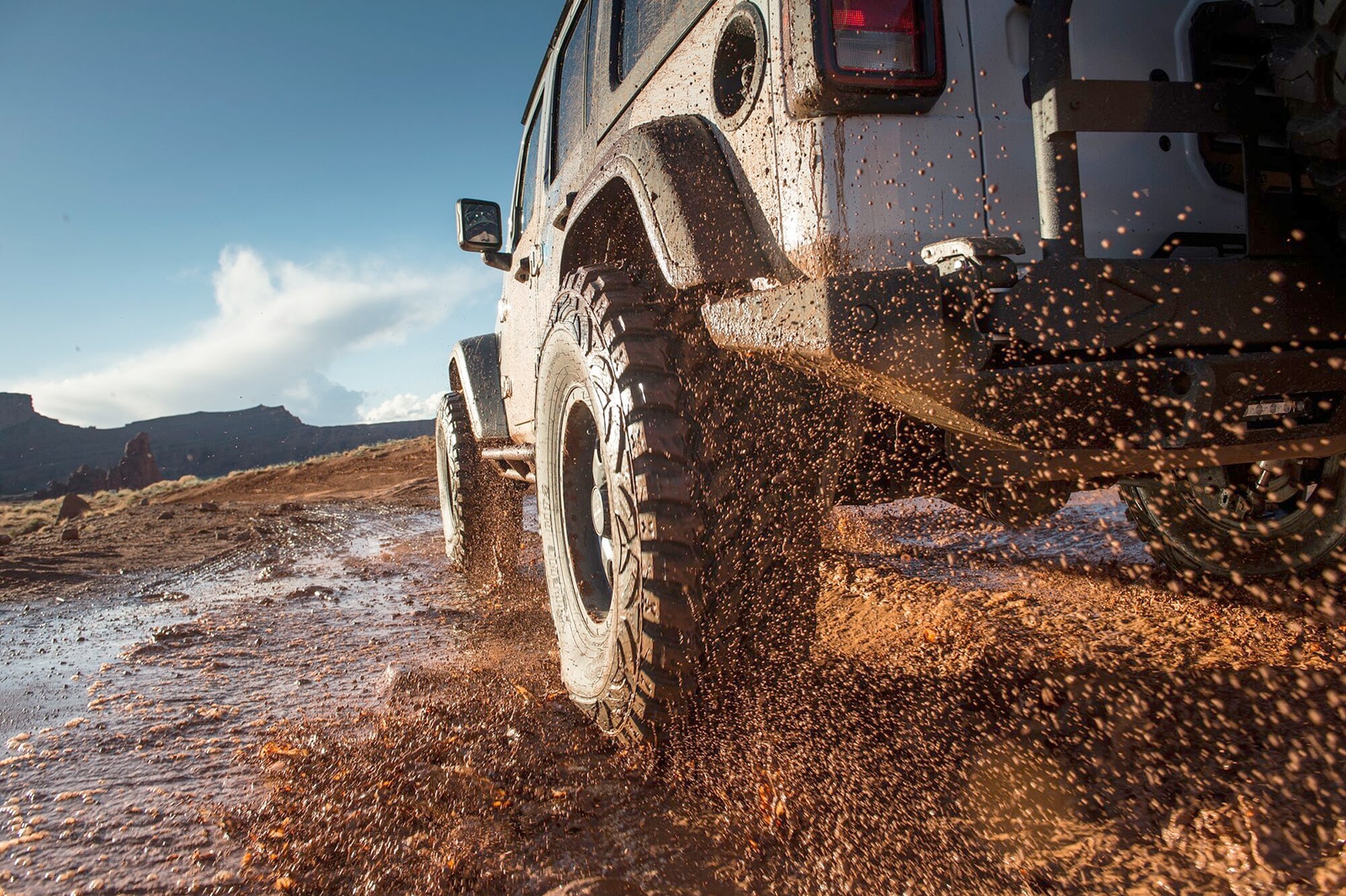
Emergency Essentials for Off-Roading
Some of the most necessary items to carry when off-roading in the backcountry are emergency items, especially when exploring in remote areas or in the high country where temperatures and trail conditions can fluctuate wildly. Emergency essentials we recommend carrying on your vehicle include:
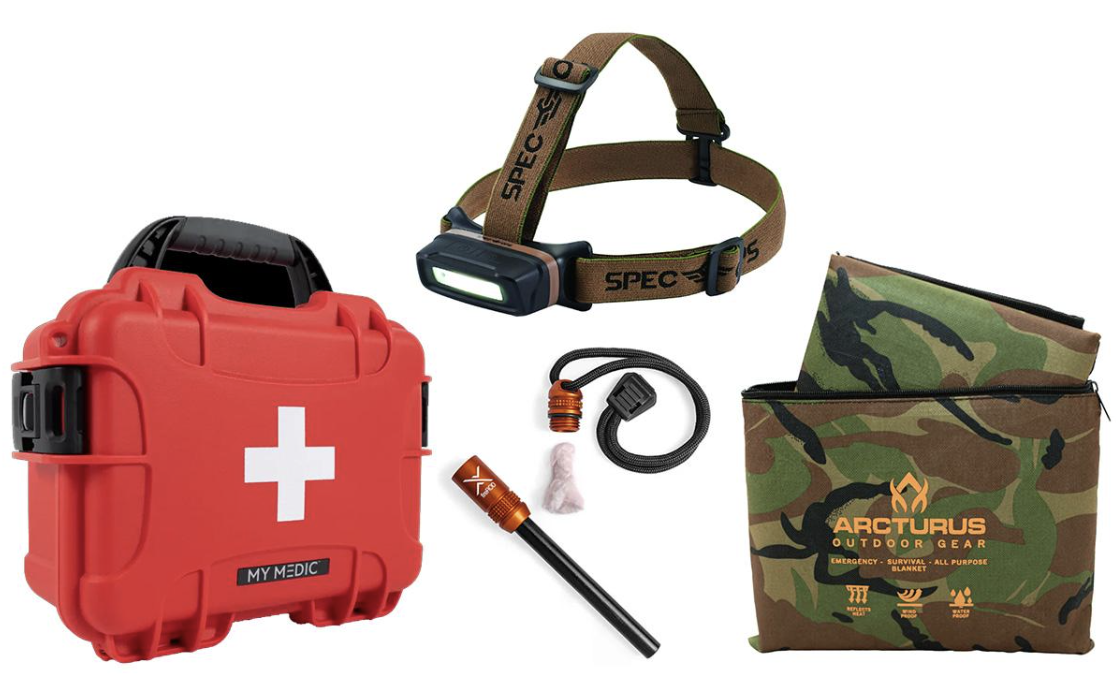
First-Aid Kit
There are many options on the market for first-aid kits. We recommend choosing a kit designed specifically for outdoor adventures, such as those by Adventure Medical Kits, My Medic, Surviveware, and Homestock+. Factors to consider include portability, durability, and a padded protective carrying case that’s easily accessible when needed.
Work Light, Flashlight, or Headlamp
A quality light is essential for emergency situations such as vehicle repairs, routine maintenance, and even food preparation at night. Things to look for include size, weight, portability, battery life, recharging capabilities, and brightness (measured in candlepower or lumens). Best case scenario: bring one of each type for optimal coverage.
Blankets and Extra Clothing Layers
A compact blanket and/or extra clothing layers are two emergency items that are essential in the backcountry, especially in higher elevations where temperatures can fluctuate widely. Be sure to choose a blanket that’s durable, packable, and reflects at least 90% of body heat to provide immediate warmth in critical situations. For extra layers, select materials that will help regulate body heat, wick moisture, and keep skin dry.
Fire-Making Supplies
Things can happen quickly in the backcountry, with a vehicle breakdown or trail mishap sometimes leading to unplanned overnight stays. It’s critical to carry a reliable fire-making kit like those from Pyro Putty, UCO, or Exotac.
Food and Water
Packing food and water is an integral part of planning any backcountry adventure. Carry enough of each to last for the intended duration of your trip—plus some extra in case of an emergency. Additional food and water can mean the difference between comfort and crisis during off-road adventures.
Rescue Essentials for Off-Roading
Accidents, injuries, and other emergencies can happen when off-roading, and there’s nothing worse than being stranded in the backcountry with a broken-down vehicle or injury and no cell service. Essential Rescue items we recommend carrying on your person or vehicle include:
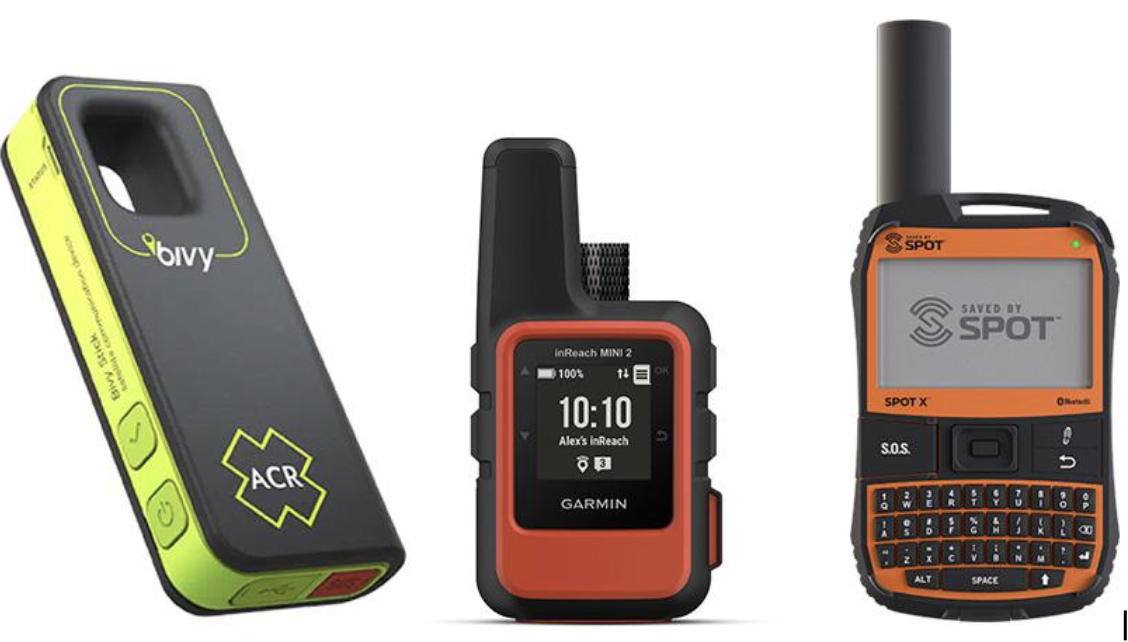
Satellite Communicator
Offline communicators like the Garmin inReach Mini 2, ACR Bivy Stick, or SPOT X provide off-roading enthusiasts with the ability to communicate even when out of cellular service range. These compact communication devices offer two-way messaging, location tracking and sharing, weather forecasting, and the ability to send SOS alerts.
Two-Way Radios or Walkie-Talkies
These handheld devices help vehicle groups stay together through direct vehicle-to-vehicle communication. With their own wireless communication protocol, these two-way devices allow off-roaders to remain connected within a limited distance when cell service is not possible.
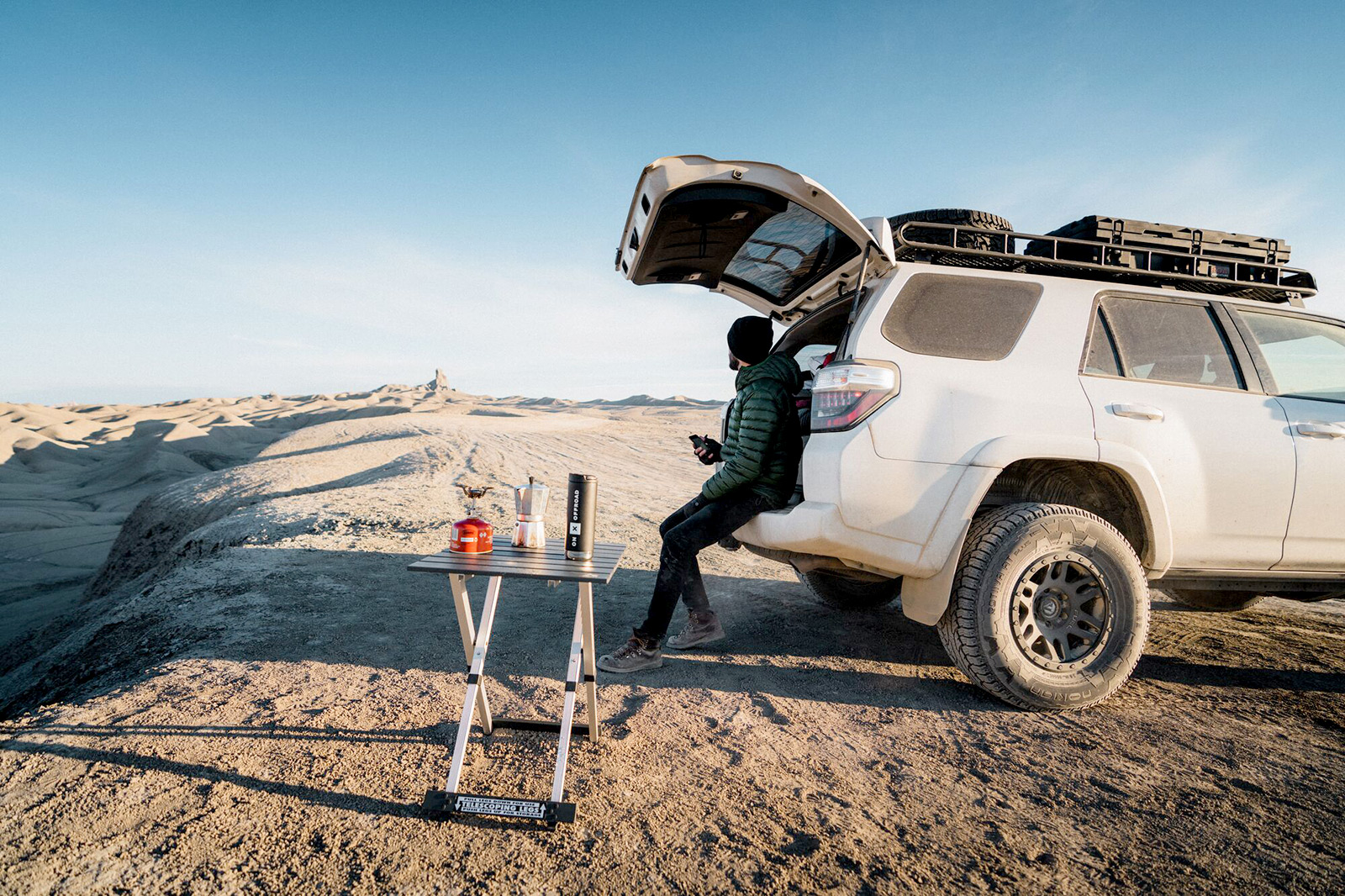
Off-Roading Repair Gear
To better prepare for the many trail hazards that can render any off-road vehicle useless, it’s important to carry the items needed for common trail repairs, such as a flat tire, dead battery, or loose bodywork. The following items are the bare minimum recommended for on-the-trail repairs.
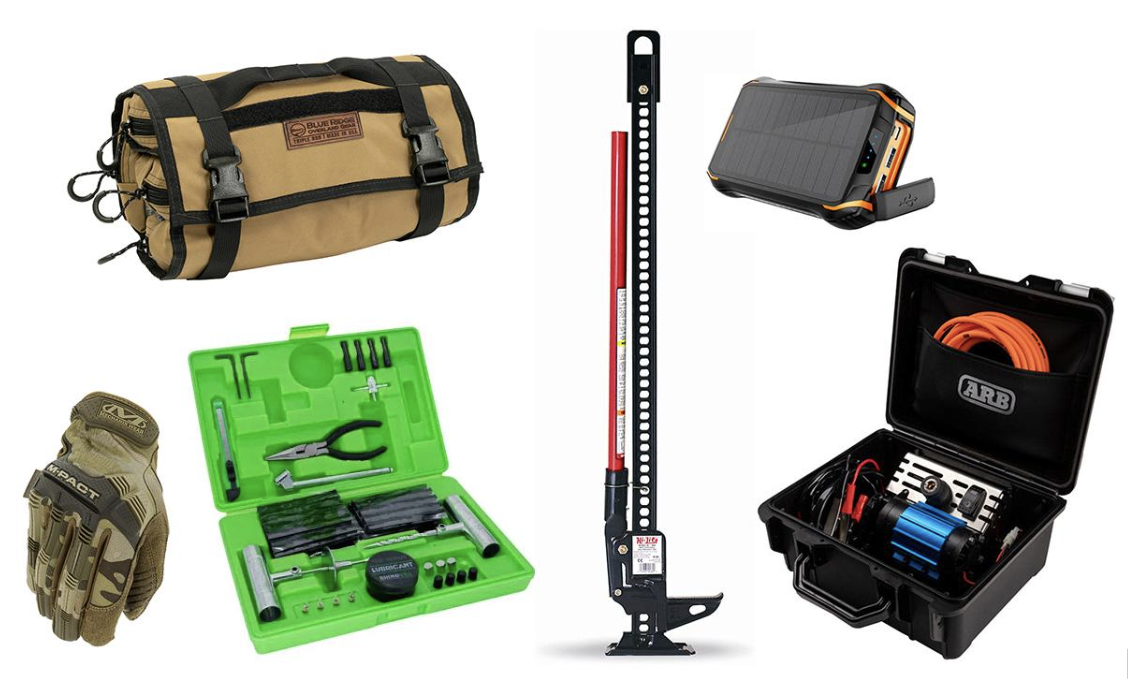
Gloves
A quality pair of work gloves will protect your hands from cuts, scrapes, and skinned knuckles when making on-the-trail repairs, and also double as a pair of driving gloves. By utilizing dirt bike/MTB glove technology, these gloves provide all-day comfort and performance.
Hand Tool Set
At a minimum, a set of hand tools should include a set of metric or standard wrenches, ratchets, sockets, pliers, and a set of screwdrivers as a starting point. Be sure to choose vehicle-specific sizes and carry them in a rugged carrying case that will allow quick and easy repairs.
Tire Repair Kit
Fixing a flat in the great outdoors is much easier with proper tire repair tools. Tire repair kits contain everything one needs to repair a flat tire in the wild, including plugs, patches, insert tools, valve cores, and more, contained in a durable carrying case.
Off-Road Jack
Another critical tool for changing a tire or making impromptu repairs is a high-quality portable off-road jack. Things to look for include a broad and stable base, a load capacity high enough for your vehicle, lift range (height), and ease of use.
Inflator/Compressor
A compact and portable air compressor is another must-have for making remote tire repairs, especially when paired with an off-road–specific tire repair kit and jack. These inflators offer a portable all-in-one solution powered by a 12V outlet or rechargeable batteries.
Charger/Starter
A dead or drained battery can spoil any off-road adventure, which is why a portable battery charger is a must. Be sure to choose a charger or starter pack model that’s capable of turning over your specific off-road vehicle. For longer overlanding trips, consider a model that’s solar rechargeable.
Duct Tape and Zip Ties
Two of the most practical and underappreciated items one should carry on any off-road adventure are duct tape and zip ties. In combination, the two enable nearly unlimited impromptu fixes and minor repairs.
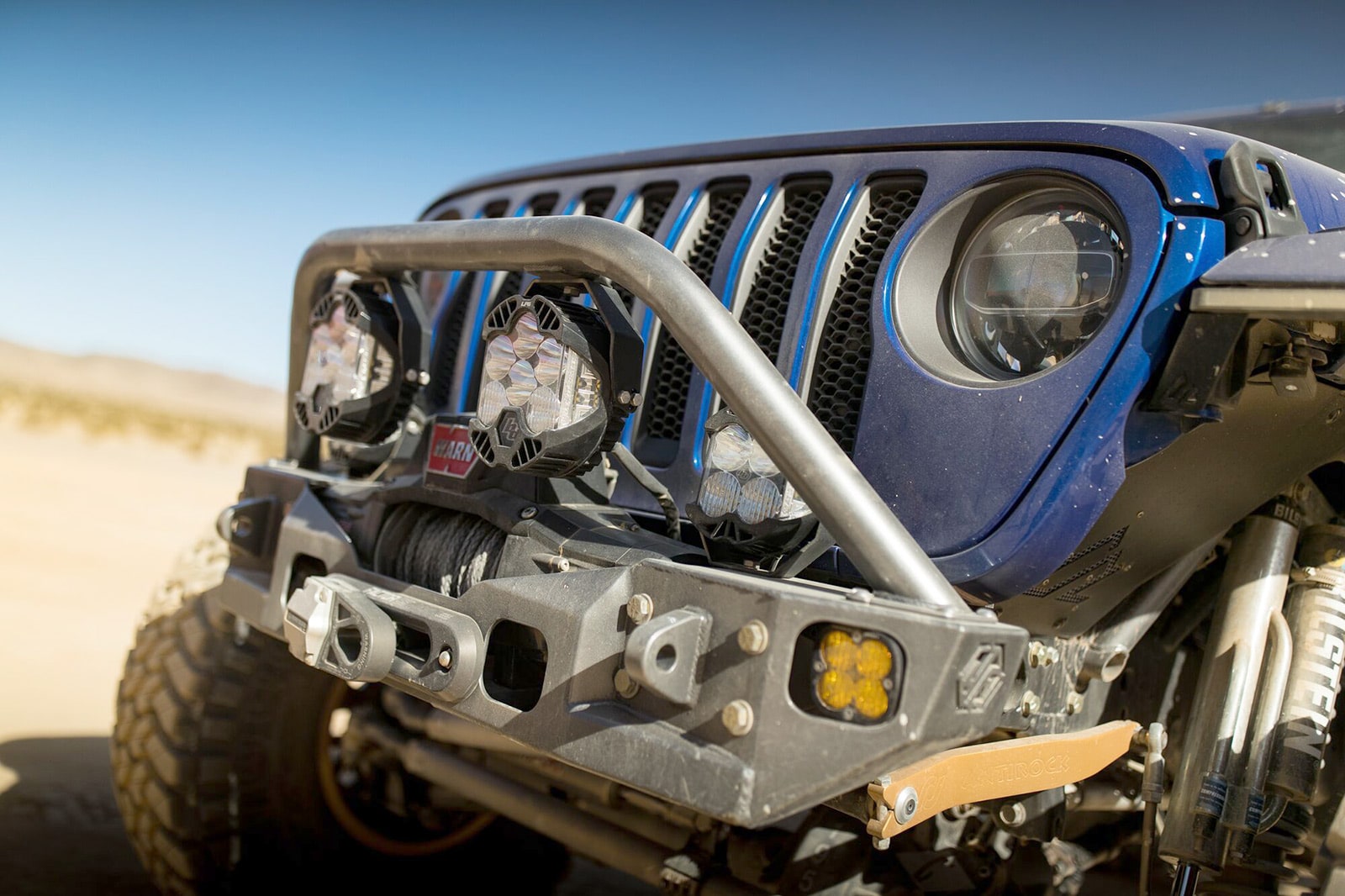
Recovery Gear for Off-Roading
Vehicle Recovery items aid off-roaders in precarious situations, such as when removing a buried vehicle from mud, snow, sand, or other problems where a vehicle is stuck and needs assistance. Recovery essentials we recommend as a starting point include the following:
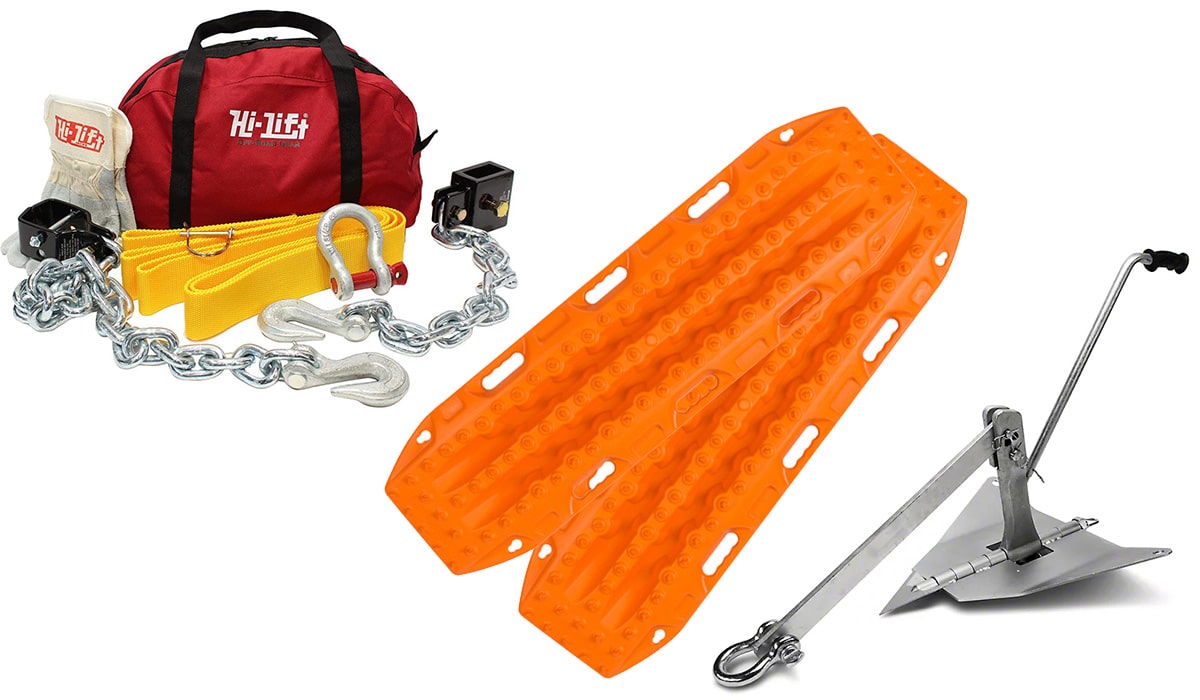
Recovery Kit
Recovery kits and accessories come in many forms in the off-roading world. These kits are typically pre-assembled to include a recovery strap, snatch block, shackles, tree trunk protector, and gloves. Check for weight ratings when making a purchase, and take some time to familiarize yourself and understand how each item in the kit will work with your vehicle.
Earth Anchor
Winching a vehicle is a regular occurrence in the backcountry, but what happens when there are no rocks or trees in sight to attach to? Carrying an earth anchor solves this problem by allowing the user to drive an anchor point into the ground when there are no above-ground anchor points in close enough proximity.
Vehicle Recovery Boards
These traction mats help with vehicle extraction by providing a raised platform with a flat, grippy surface to keep the vehicle from spinning when stuck in mud, snow, or sand. These boards can also typically double as a pad for placing a tire-changing jack.
Other Essential Off-Roading Accessories
There are hundreds of innovative and helpful items one can choose to carry when off-roading, and here are a few more that we recommend bringing when on a backcountry adventure.
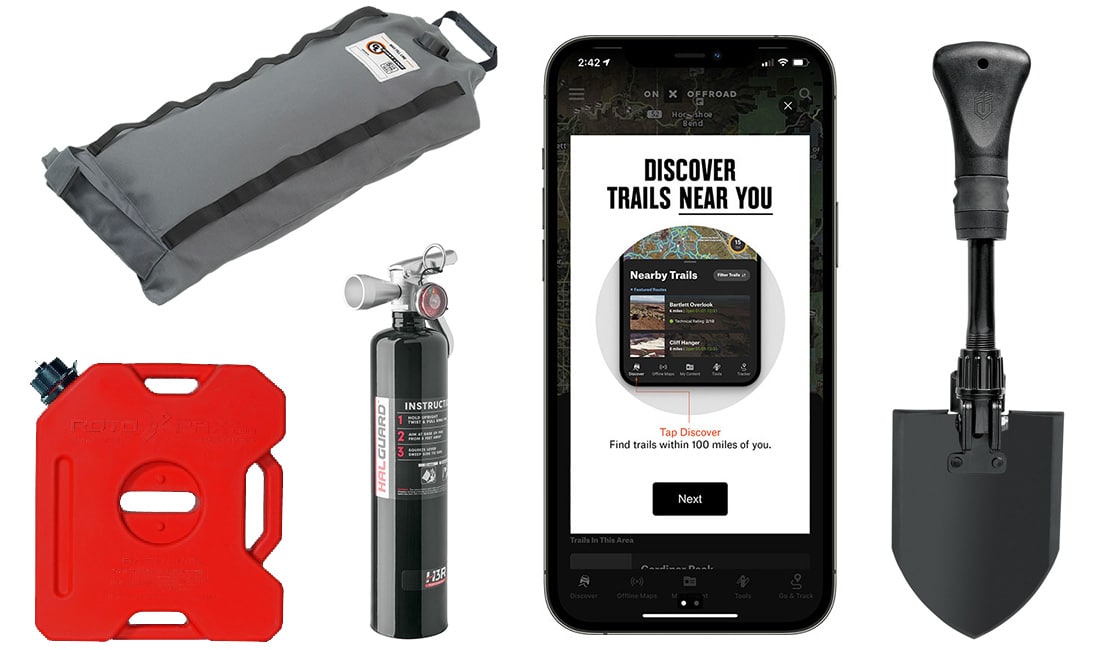
Fluid Storage
Carrying extra water and fuel is imperative when on longer trips or in extremely remote locations. Liquid utility containers like the Armadillo Bag™ from Giant Loop or Rotopax™ fuel and water packs provide a safe and reliable way to carry extra fluids.
Shovel
Although not an absolute must for off-roading, another all-around handy item to carry is a compact, foldable shovel to aid with the recovery process when an extraction is necessary. Things to consider when making a purchase are blade type, handle length, and overall portability.
Fire Extinguisher
Vehicle fires can happen when off-roading, so it pays to be prepared with a reliable and easily accessible fire extinguisher. Off-road extinguishers use formulas that fight common vehicle fires that result from fuel leaks, electrical issues, and overheating engines.
onX Offroad GPS App
Getting lost is never fun, which is why every off-roader should have the onX Offroad App installed on their smartphone for quick, easy, and accurate access to miles of off-road trails. Access trails, including remote, unknown trails and renowned Jeep Badge of Honor Trails, campsites, and your custom markups in one App. Try onX Offroad today
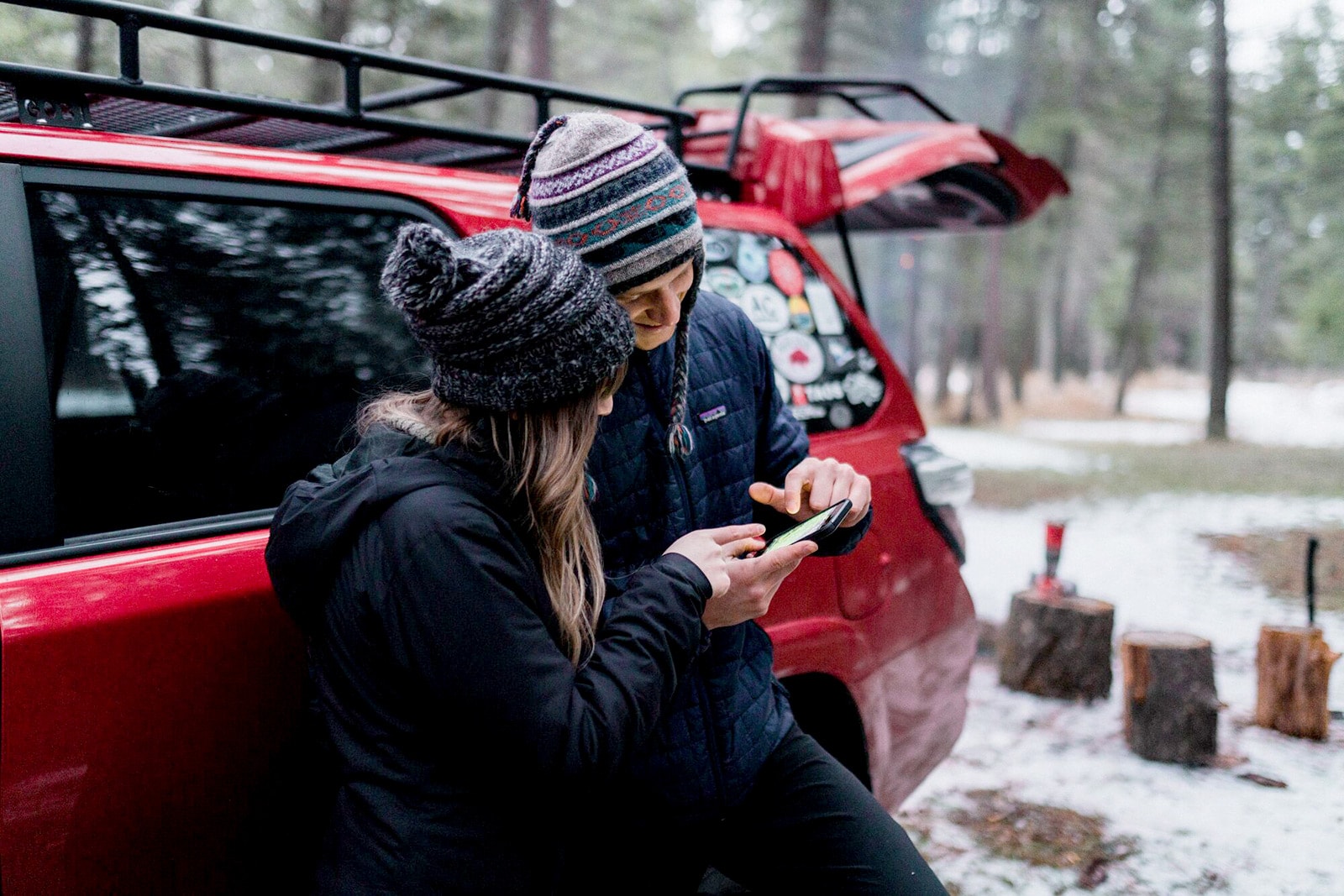
Plan Ahead for Your Next Off-Road Adventure
At first, it may seem a little overwhelming to plan and prepare for an off-road adventure. Still, we hope that armed with the above list of essentials, you will have a jumping-off point to begin your research and help answer questions like “What should I bring off-roading” or “What tools do I need for off-roading?” Start at the top of the list, take one section at a time, and better prepare yourself for the unknowns of off-roading. No matter what you choose to bring with you in the backcountry, exercise caution, prepare for the extremes, and above all, have fun, and tread lightly.